Oxfordshire Mind’s Physical Activity Team are offering a weekly ‘virtual walk’, this week the team are visiting the Namib desert in Southern Africa.
Hello everyone. Today we are going to be travelling to the Namib desert in Southern Africa, one of the oldest deserts on earth. This dry, dusty corner of the world is a truly fascinating place, sounding like it comes straight out of science fiction. The local people call it the ‘vast place’, miles and miles of barren, baking wasteland that present a formidable challenge to any living being that dares to enter. Pressed up against an equally inhospitable shoreline, so treacherous that it’s known as the Skeleton Coast, from space it looks like a giant rust stain gnawing at the edge of Africa. It’s a Martian landscape of towering sand dunes, littered with the bones of long-ago shipwrecks and torn by howling winds.
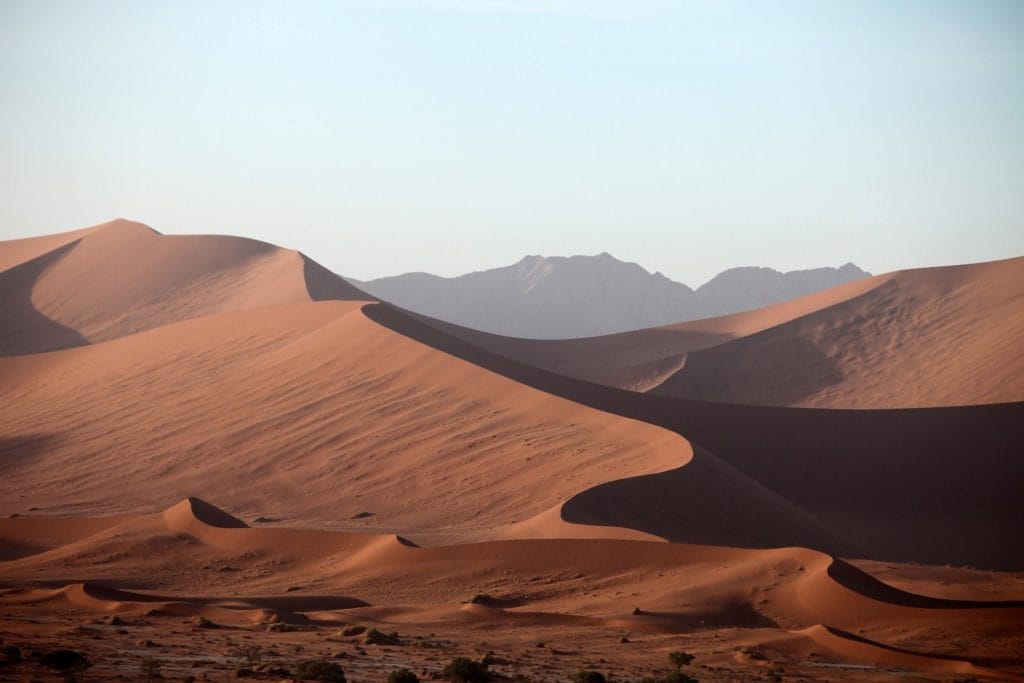
At first glance, it might not sound like the most appealing place to go for our walk, and yet improbably enough the Namib has a booming tourist industry. Every year thousands of intrepid adventurers make the journey out here, and hopefully once we have a chance to look around you’ll come to see why. The Namib has a surreal and otherworldly majesty unlike anywhere else on earth, one that brings you face to face with the fragility and beauty of life on our planet.
We are in the Sossusvlei region of Namibia, home to some of the most photogenic dunes in the desert. We enter the park at sunrise, and as we drive up to the start of our trail in a 4X4, we are treated to the sight of a group of ostriches running in the distance, their long-legged forms silhouetted against the landscape of sand dunes.
And what a landscape it is. You assume that all deserts look the same –rows and rows of yellow sand, piled high, stretching out endlessly like waves in some sort of fossilised ocean – and that there’s not really much to see in all that uniform emptiness. But the Namib will teach you to see things a little differently. The dunes here are not the tawny colour of the Sahara, but a rich, rusty orange, fading sometimes to pink or red and speckled with grains of gold. The view is never the same from hour to hour or day to day as the light shifts and catches different parts of the dunes, creating complex patterns of light and shade and even subtly shifting their colours. Their very bareness is their beauty, and any interruption to that would look wrong, somehow.
“You assume all deserts look the same- rows and rows of yellow sand, piled high, stretching out endlessly like waves in some sort of fossilised ocean…but the Namib will teach you to see things a little differently.”
We hop out of the 4X4 and begin to follow a path skirting the edge of several of these enormous mountains of sand. Some of the dunes here are over three hundred metres high, the height of the Eiffel tower. We stop at the base of the tallest. It’s the dune known as ‘Big Daddy’, and at 325 metres high, should provide us with a good early morning workout. Take off your shoes before we start to climb- your trainers will only get filled up with sand – and step onto the dune barefoot. The ground sinks and shifts beneath our feet and the wind grabs at our hair as we make the long climb up the first ridge, following its sinuous curve along the top of the dune.
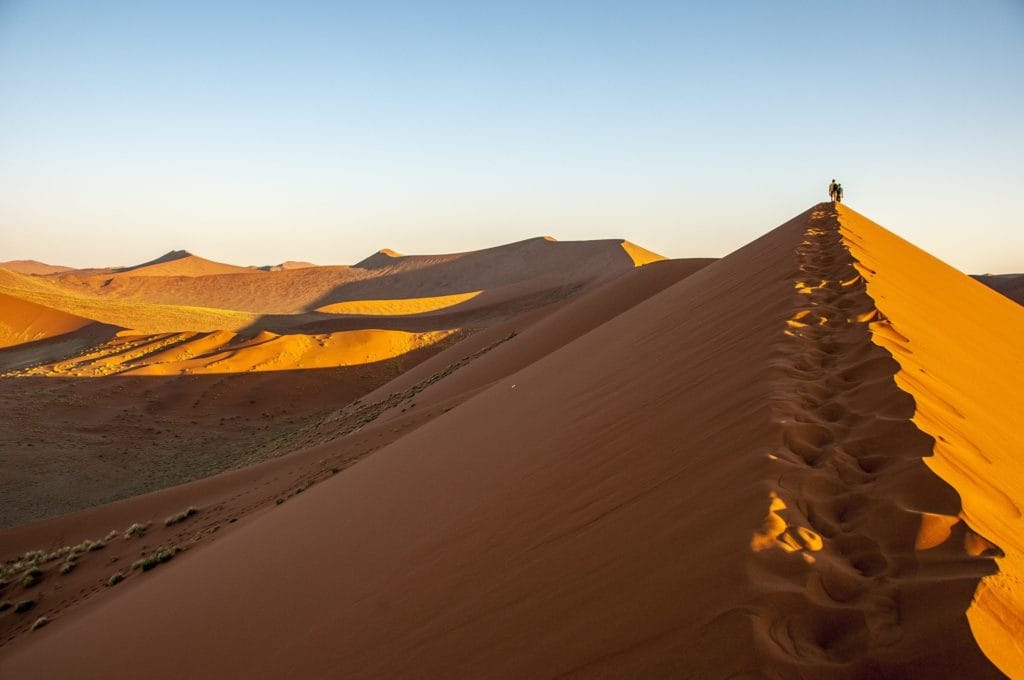
Although things might feel very impermanent, up here in all the blowing sand, actually these dunes are ancient; at the bottom, the sand probably hasn’t shifted for millions of years. The Namib is possibly as much as eighty million years old, and it’s truly incredible to think we are walking in scenery that hasn’t changed much since the time of the dinosaurs. There’s a type of plant we might come across here which is a kind of living fossil, found nowhere else on earth, formed of two long leaves that keep on growing throughout its lifespan.
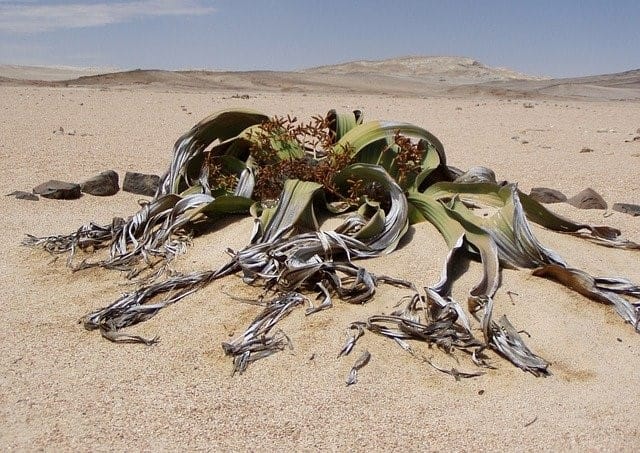
After the first long ridge of the dune, there’s a brief downhill interval before the final climb. This seems like a good moment to stop to catch our breath. Make sure you take a good swig from your water bottle when we do.
Some sort of small insect scuttles across our path as we pause here. Maybe it’s one of the famous Namib fog beetles. These ingenious creatures make use of one of the few sources of moisture in the desert; the fogs that roll in from the Atlantic Ocean every morning. They have special ridges on their backs that enable them to capture and condense the water vapour in the air. At dawn they stand on a ridge of sand, wings extended, stealing life-giving droplets of water from the mist.
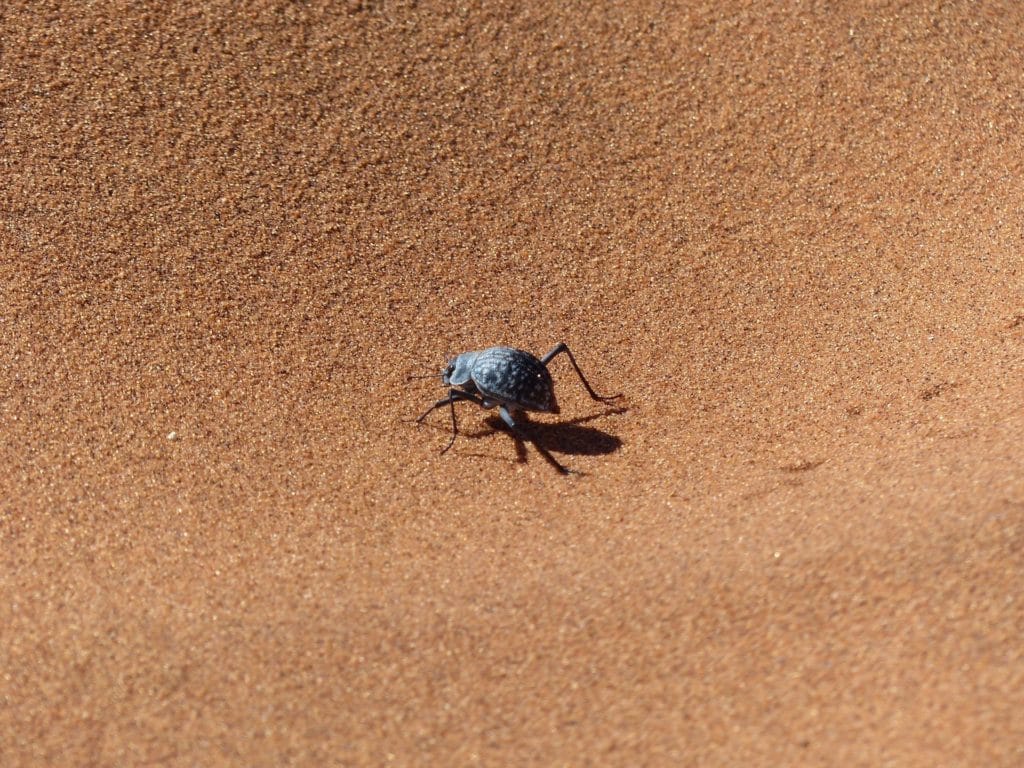
We set off again, up the final ridge to the top of the dune. From here you get a good view out over Deadvlei or ‘Dead Marsh’. Once upon a time a fertile oasis, it is now a dried-up clay pan of salt-crusted sand. It’s one of the park’s main attractions in and of itself, and we will be making our way down there ourselves in a moment.
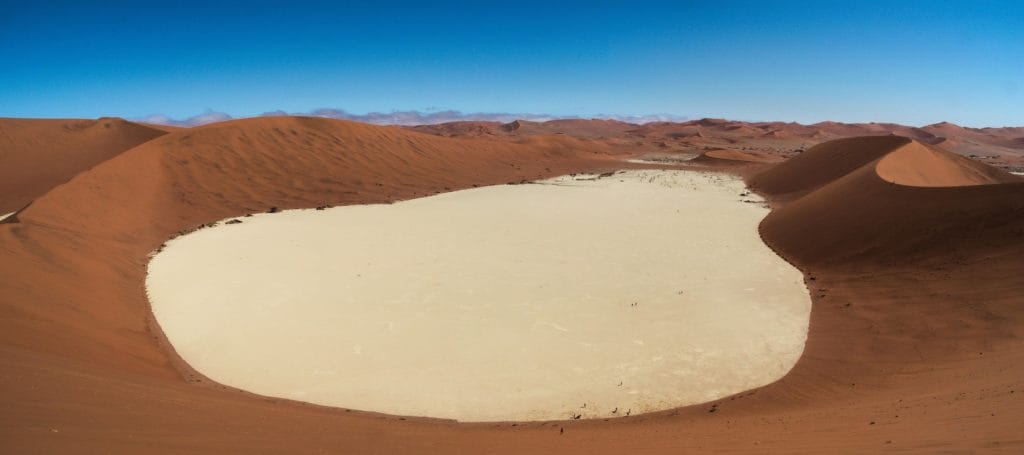
After all that time and effort climbing up the dune, it only takes a few minutes to come down it. It’s impossible not to run or slide down the slope, an experience part exhilarating, part terrifying. The sand makes a roaring noise as we descend, always on the point of losing control completely and falling flat on our faces.
Now we find ourselves in Deadvlei. The ground here is the off-white of bleached bones, a stark contrast to the vivid orange of the dunes surrounding us. Thousands of cracks spread out in every direction along the ground, and the landscape is peppered by the blackened outlines of dead acacia trees, remnants from a time when this land was lush and fertile. This strange and eerie landscape is one of the most photographed locations on the continent, and you can see why- you’re unlikely to see anything like it anywhere else on earth. It’s still early, but the land is already shimmering and waving in the heat, adding to the dreamlike quality of this already bizarre landscape.
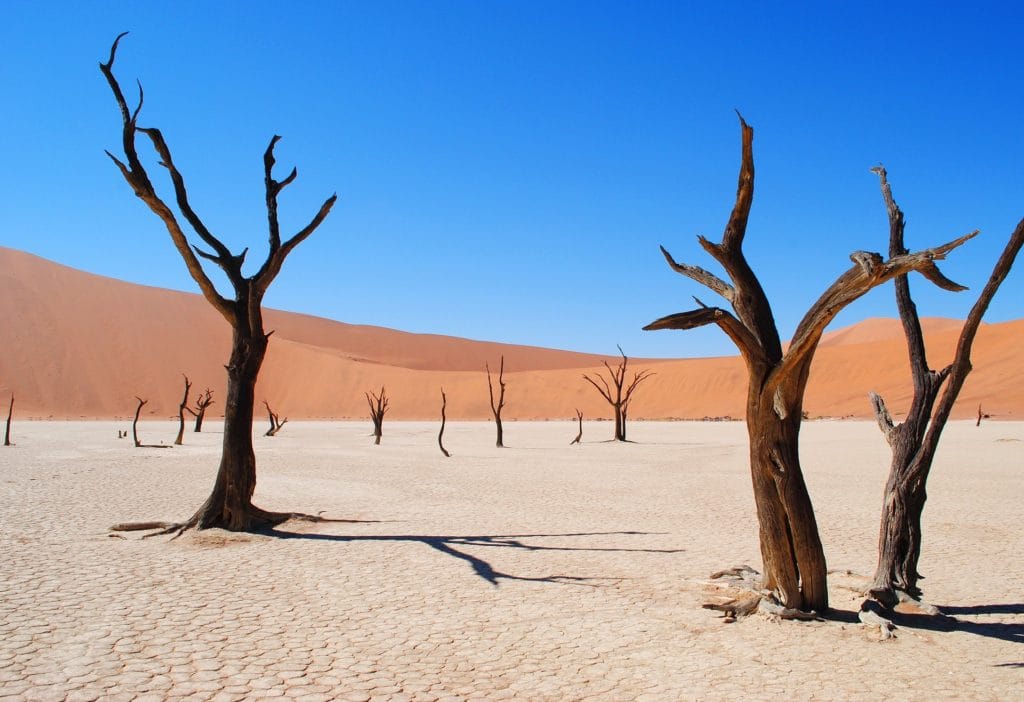
Feel free to wander around and take as many pictures as you like before we make our way back to the 4X4. I hope you’ve enjoyed our walk today. See you next week for another walk!


